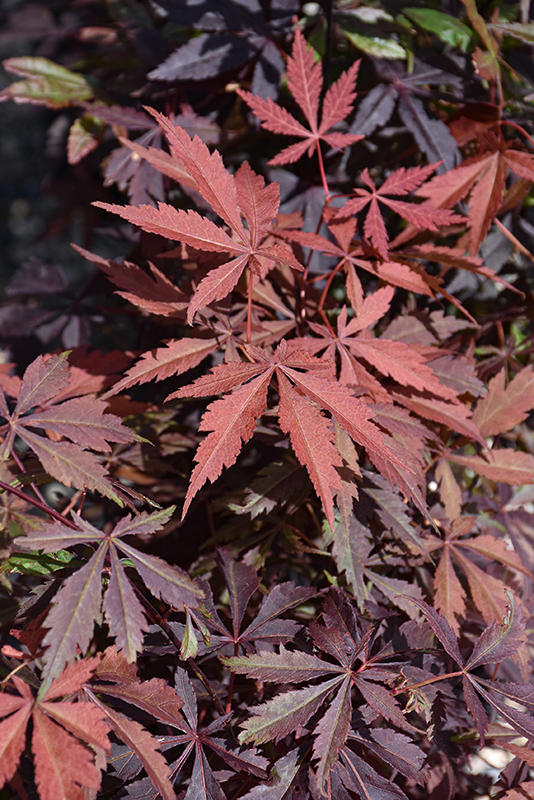Digging deeperPlant Library
Purple-Leaf Japanese Maple
Acer palmatum 'Atropurpureum'
Height: 12 feet
Spread: 12 feet
Sunlight:
![]()
![]()
Hardiness Zone: 4
Description:
One of the most stunning landscape accent trees available, featuring an incredibly artistic habit of growth and distinctively palm-shaped leaves that emerge rich purple and darken to a deep green-bronze over summer; the perfect feature tree
Ornamental Features
Purple-Leaf Japanese Maple is primarily valued in the landscape or garden for its ornamental globe-shaped form. It features subtle corymbs of red flowers rising above the foliage in mid spring. It has attractive deep purple-tipped dark green foliage which emerges deep purple in spring. The lobed palmate leaves are highly ornamental and turn an outstanding red in the fall. The rough gray bark and red branches add an interesting dimension to the landscape.
Landscape Attributes
Purple-Leaf Japanese Maple is an open deciduous tree with a more or less rounded form. Its relatively fine texture sets it apart from other landscape plants with less refined foliage.
This is a relatively low maintenance tree, and should only be pruned in summer after the leaves have fully developed, as it may 'bleed' sap if pruned in late winter or early spring. It has no significant negative characteristics.
Purple-Leaf Japanese Maple is recommended for the following landscape applications;
- Accent
Planting & Growing
Purple-Leaf Japanese Maple will grow to be about 12 feet tall at maturity, with a spread of 12 feet. It has a low canopy with a typical clearance of 4 feet from the ground, and is suitable for planting under power lines. It grows at a slow rate, and under ideal conditions can be expected to live for 80 years or more.
This tree does best in partial shade to shade. It prefers to grow in average to moist conditions, and shouldn't be allowed to dry out. It is not particular as to soil pH, but grows best in rich soils. It is somewhat tolerant of urban pollution. Consider applying a thick mulch around the root zone in winter to protect it in exposed locations or colder microclimates. This is a selected variety of a species not originally from North America.
Note:
Prefers a protected location. East or northeast is great for protection from the intense sun. Protect from drying winds.
A NetPS Plant Finder tool
This Plant Library is for informational purposes only. We may or may not carry the items listed. During many times of the year, we may carry many more plants in our store than are listed in the Plant Library. Please contact us directly at 303-690-4722 or visit our store for current availability and for assistance.


